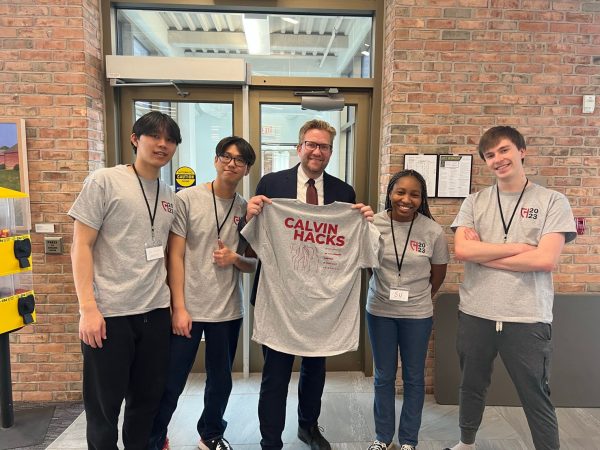Calvin seminar spreads awareness of tobacco industry strategies
The tobacco industry uses a variety of tactics to insert its products into U.S. society, mainly by targeting young people and racial minority groups.
Tobacco has consistently been found to be harmful to users’ health, but the tobacco industry continues to flourish, aiming its advertising at youth and racial minorities. Calvin alumna Maya Bryant, manager of the Center for Health and Wellness at the Urban League of West Michigan, works to reduce tobacco use and buoy communities’ health by approaching the issue systemically.
The Center for Counseling and Wellness partnered with the Urban League to host a seminar on the impact of the tobacco industry at Calvin on Jan. 18.
The seminar delved into the ways the tobacco industry has woven itself into modern society and how efforts from different parts of the community are trying to neutralize its effects.
Targeted advertising
The tobacco industry has achieved its longevity by using a variety of tactics to insert its products into U.S. society, mainly by targeting young people and racial minority groups.
If they can get kids … hooked at an early age, then they can become those lifelong consumers.
— Maya Bryant
“If they can get kids … hooked at an early age, then they can become those lifelong consumers,” said Bryant.
To make tobacco products more appealing to youth, many companies have promoted flavored electronic-cigarettes.
“81% of kids that are starting to use tobacco products [say it is] because it comes in flavors that they like … It’s not a yucky tobacco flavor anymore, now it is mint or sour patch or cotton candy,” said Bryant.
A 2007 American Lung Association (ALA) study found that billboards and outdoor advertisements in predominantly African American neighborhoods were 70% more likely to be advertising smoking-related products than similar billboards and outdoor advertisements in predominantly white neighborhoods.
That’s not a coincidence; racial minorities have long been a target of tobacco industry advertising in the U.S.
For every cigarette you might have, it is $40 that you have in additional costs to your healthcare cost.
— Maya Bryant
This targeting increases health and financial burdens in racial minority communities. “One of the … [downsides] is the increase in healthcare costs. …for every cigarette you might have, it is $40 that you have in additional costs to your healthcare cost,” said Bryant.
According to the ALA, the tobacco industry has devoted a great deal of time and effort to recruiting minority group users, from reducing the price of tobacco products in some communities to naming products with the sole intent of increasing a brand’s attractiveness to a minority group.
Even with the downsides of the tobacco industry being publicized and mounting pressure from federal and local policies, the tobacco industry is resilient.
The continued presence of the industry, Bryant believes, is as a result of the industry’s efforts towards “continuing to develop new products and almost being 10 steps ahead.”
These efforts can be seen in the creation of products like mentholated tobacco which soothes the throat and decreases coughing, or nicotine patches which do not even produce smoke.
Systemic support
The tobacco industry has been able to shift the blame of tobacco addiction away from producers and towards those who are addicted to their products, according to Bryant.
“It’s so much easier, especially in our society, to blame individuals than to correct systems. So I think it’s really important that we focus our time and energy on fixing the system that played into people having the addiction,” said Bryant.
Prioritizing alleviation of socioeconomic challenges can significantly impact combating tobacco use, according to Bryant.
“Maybe somebody having food security, or having a stable job or, you know, just all these different … social determinants of health — if we can support people in those ways, [then] maybe they don’t need to turn to smoking at the end of the day to calm themselves and relapse,” said Bryant.
Government policies are making efforts to restrict the effects of the tobacco industry, including federal restrictions on what flavors can be used for tobacco production and, in Michigan, an increase in the minimum age for buying tobacco products from 18 to 21.
Organizations like the Urban League of West Michigan are looking ahead to the enforcement of these policies with the hope of lessening the tobacco industry’s exploitation of youth and racial minorities.







Derrick Owens Sr • Feb 14, 2023 at 1:18 pm
Maya and the health and ULWM Wellness Team thanks for educating the community on the ills of the tobacco industry and its strategic attack on people who live in the Urban Communities across America.
Either we stand for something or we fall for anything !
Great Awareness when America celebrates Black History Month !